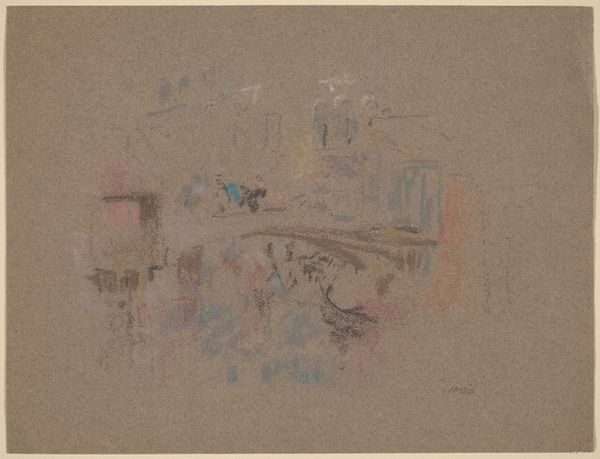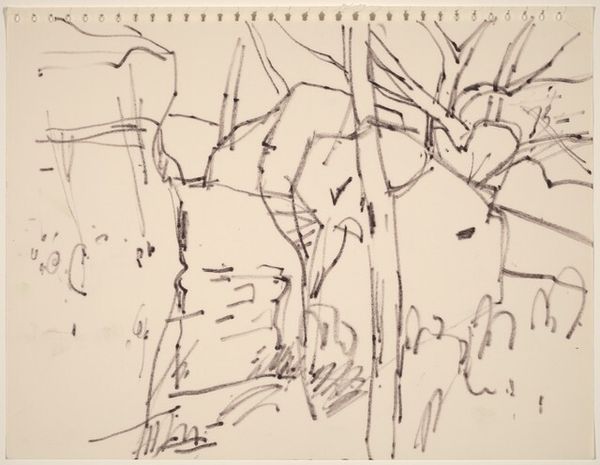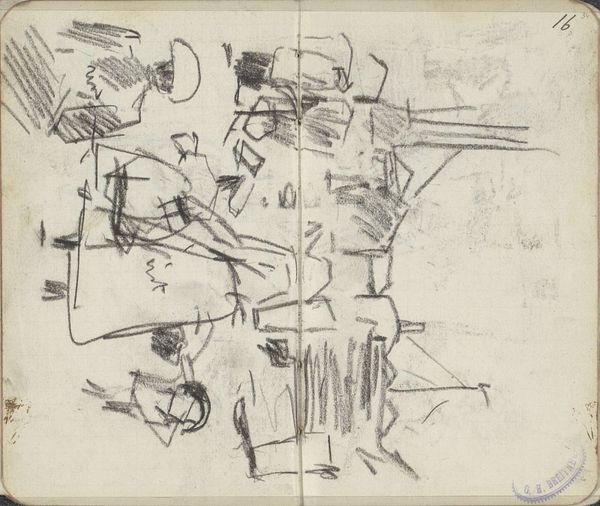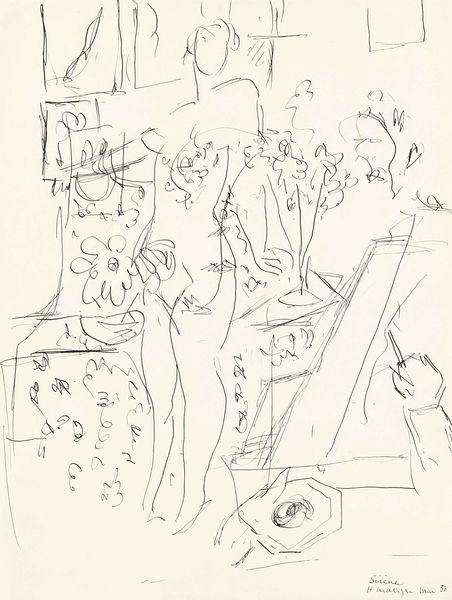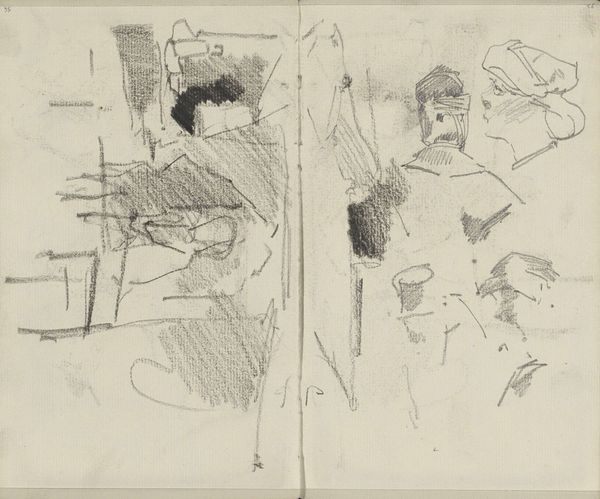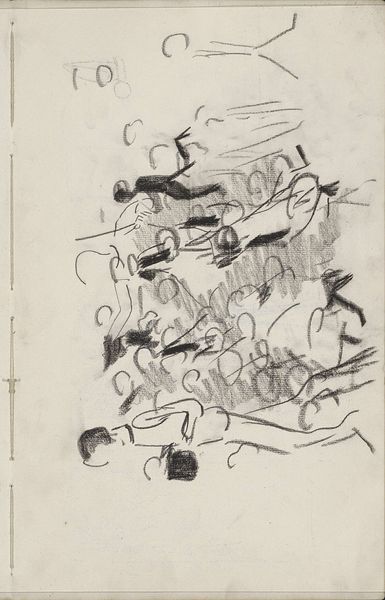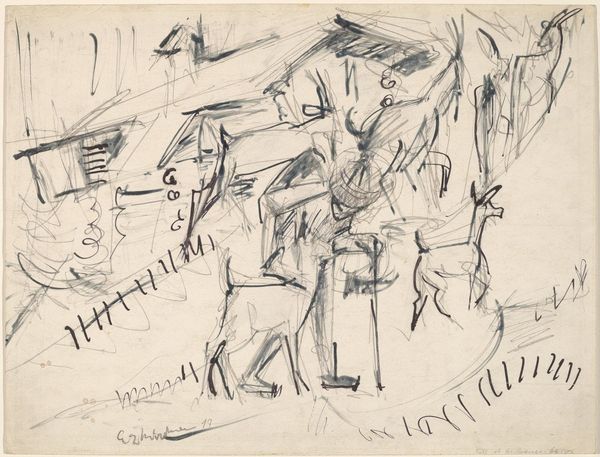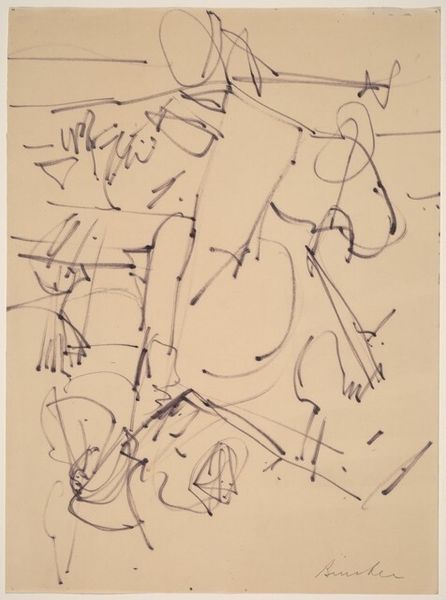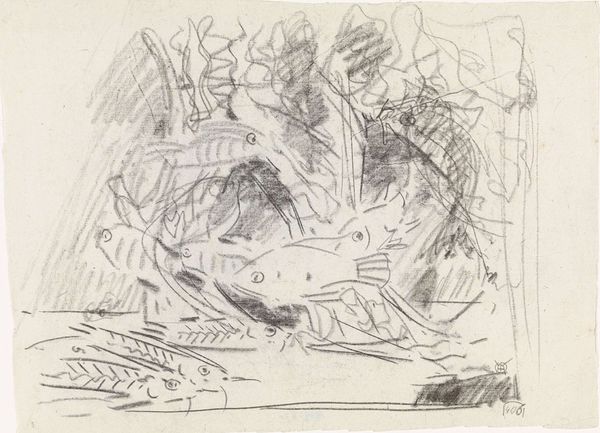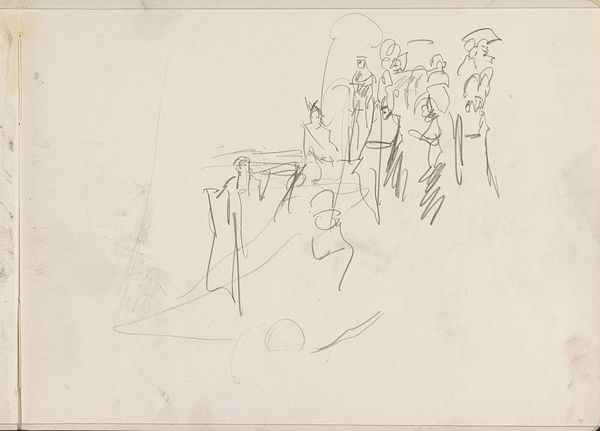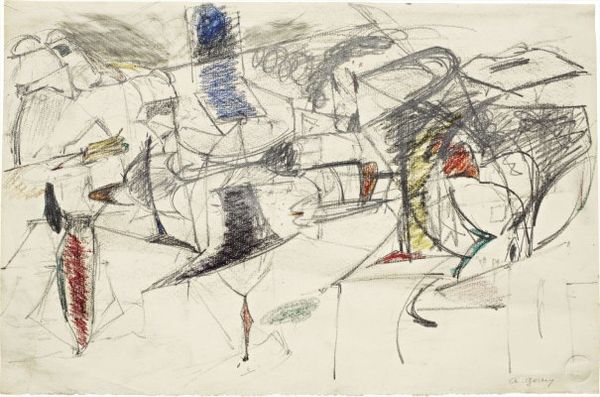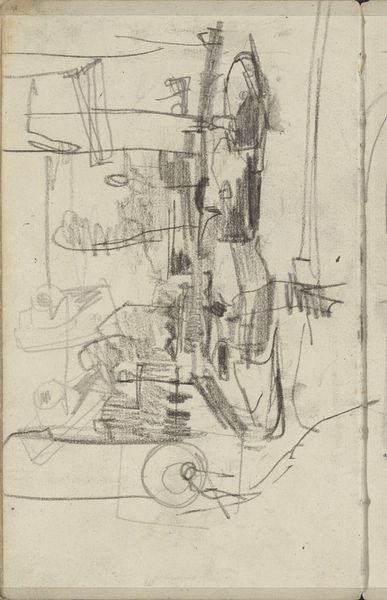
drawing
#
drawing
#
light pencil work
#
pen sketch
#
incomplete sketchy
#
personal sketchbook
#
ink drawing experimentation
#
pen-ink sketch
#
sketchbook drawing
#
watercolour illustration
#
sketchbook art
#
initial sketch
Dimensions: overall (approximate): 40.1 x 29.6 cm (15 13/16 x 11 5/8 in.)
Copyright: National Gallery of Art: CC0 1.0
Editor: So, this is Imre Reiner's "Interior Scene with Five Figures and Set Table" from 1932. It looks like a drawing, maybe pen and ink... It has a very casual, almost dreamlike quality. I’m really drawn to the sort of implied narrative. What do you see in this piece? Curator: The drawing immediately reads as a tableau of bourgeois life viewed through a slightly fractured lens. The set table, the figures in what appears to be mid-conversation, even the wrought-iron balcony—these are all symbols of a particular social class and period, just before the Second World War. Editor: Fractured lens… can you expand on that? Curator: Reiner’s sketch-like style isn’t merely stylistic. Notice how the figures overlap and are only partially defined, especially the central figures and even the balcony motif behind the characters. These unfinished, ambiguous shapes mirror the fragmentation of the social order about to unfold in Europe. Editor: So, you’re saying the incompleteness represents something deeper? Curator: Precisely. And look at the vase with wilting or bare branches on the table, and the hanging meat. They offer symbolic weight of a disrupted prosperity and looming loss. These potent symbols resonate across time; the feeling is palpable. What emotions does it conjure for you? Editor: A sense of unease, definitely, like something is about to unravel. I see what you mean now—it's not just a sketch; it’s a premonition. Curator: Exactly. It demonstrates how art captures, refracts, and refracts and transforms our cultural memory. Editor: I never would have considered the symbols so intentionally, or how much context adds to its meaning. Thanks!
Comments
No comments
Be the first to comment and join the conversation on the ultimate creative platform.

